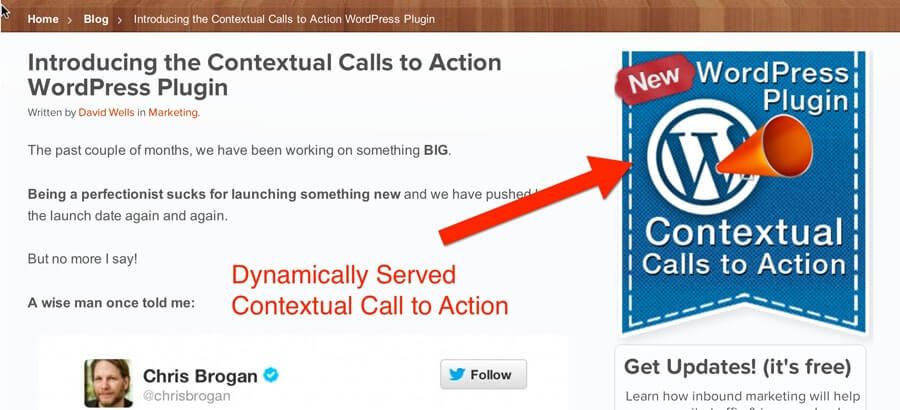A Quick Checklist for a Quality Blog Post

In today’s competitive marketing world where companies are repeatedly striving to have their products or services seen, having an updated blog is already a well-accepted industry norm. Unfortunately, keeping a blog requires consistent dedication and adequate writing abilities. After all, we can’t just types words out on WordPress and expect that to have any sort of SEO value. Google and other leading search engines are far too smart for that to have any significance.
Therefore, the challenge is quite obvious: how can we, as content marketers, effectively write blog posts that are of actual quality and give an added value to our users? While there is no simple solution that will magically solve all of your blog writing problems, there is a series of ‘must-haves’ that are common to the majority of successful blog posts. These are those main elements that help form a writing style that is most effective in terms of its ability to be read seamlessly and more importantly, shared by those blog visitors.
How can we meet this challenge?
We have prepared a checklist of these ‘must-have’ elements below as a useful guide that can help you and your writing colleagues move from the point of relative blog insecurity, to a state of ease and confidence:

- A clearly defined target audience
A blog can only be successful if you clearly know who you are writing to. Whether you are trying to sell a new feature to a potential buyer or just adding your own thoughts regarding a leading industry topic, your target audience must be defined beforehand. While some blogs have a consistent target group they reach out to, some content marketing agencies have set up different internal blogs to cater to a different group of people – take a look at B2B Marketing Insider and HubSpot’s Blog for examples of the latter.
- Title chosen is both timely and unique (respective to your previous posts)
While this checkmark may be difficult to obtain and will involve the process of moving from a working title to a finalized one, its importance cannot be underestimated. Think about it – this is the first headline people see once you have pressed the ‘publish this post’ button. Therefore, since you often have that one opportunity to impress and captivate a reader’s interest, make sure you have taken the time to develop one that stands out, clearly covers what your post will discuss, and that is unique in order to avoid copyright infringement issues.
- Post is organized accordingly with engaging subheads and relevant keywords
There are many ways to format blog posts since this is ultimately influenced by the type of post you are writing. For instance, for list-type posts, there is often an introduction followed by a set of points and then a conclusion. Meanwhile, there are also plenty of case-study posts in the realm of content marketing. These posts often dive into industry examples early on. Either way, include exquisite subheads and relevant keywords as you progress throughout your article in order to keep the readers engaged and the post SEO-friendly.
- Opening statement clearly dictates intention
The opening statement can go a long way in determining whether or not your post will be successfully digested, or even if the reader will continue reading it. It often (as it should) dictates the intentions of the content marketer in his/her post. Therefore, considering the need to impress readers early on, a significant amount of time should be invested in starting the post off the right way. Some content marketing experts even suggest writing the post and then returning to the opening part in order to ensure that all components of the post flow accordingly.
- Call-To-Action has been organically embedded and strategically placed
We write blog posts for a few simple reasons, one of which is clearly to convert. Regardless of what we are offering to our potential consumer (a product or a service), the need is always there. Consequently, content marketers are always on the hunt for the perfect placement of call-to-actions (CTA) on such posts. The trick is to carry out this task in an organic way in order to best reach conversion rate optimization, as forcefully adding in a CTA can deter customers from your product offering. Check out Wishpond’s post on using CTAs to generate leads from your blog, with insights on the appropriate placement of such messages (from side bar positioning to scroll pop-ups) to best optimize conversion rates.

perfect placement of call-to-actions (CTA) on blog posts
- Appropriate images are included
While the exact dimensions and number of photos has been debated extensively in the marketing field, all can agree on the importance of adding visuals to our posts. Looking at a post of 1200 words can be daunting, especially when content marketers typically spend hours reading and examining different articles on a daily basis. Therefore, including appropriate images is necessary to keep your readers engaged. This great post includes a list of sources for free stock photos to include in your next post – you can thank us later.
- Post has been proofread at least twice
While some content marketers have amassed tremendous experience in writing blog posts, we are all humans that can make mistakes. Such mistakes can be so minor that the majority of our readership will likely even overlook them. However, it is up to us to go over blog posts multiple times prior to publishing. Ideally, we should send our article to our colleagues in order to have another set of eyes examine the piece for any spelling, technical, syntax, or structural issues.
Looking for extra motivation?
If you are in need of some motivation to help you get started, check out our recent post on quick tips for generating blog ideas. Some of other sources of inspiration on this topic can be found on these leading sites: